 W
WAspidoceras is an extinct ammonoid cephalopod genus belonging to the family Aspidoceratidae.
 W
WThe Baños del Flaco Formation is a Late Jurassic to Early Cretaceous (Tithonian to Berriasian geologic formation in central Chile. The formation comprises limestones and sandstones deposited in a shallow marine to fluvial environment. Fossil ornithopod tracks have been reported from the formation.
 W
WBrachyphyllum is a form genus of fossil coniferous plant foliage. Plants of the genus have been variously assigned to several different conifer groups including Araucariaceae and Cheirolepidiaceae. They are known from around the globe from the Late Carboniferous to the Late Cretaceous periods.
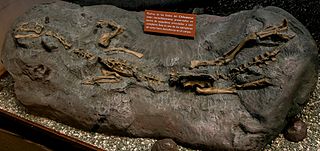 W
WChilesaurus is an extinct genus of herbivorous dinosaur. The type and only species is Chilesaurus diegosuarezi. Chilesaurus lived about 145 million years ago (Mya) in the Late Jurassic period of Chile. Showing a combination of traits from theropods, ornithischians, and sauropodomorphs, this genus has far-reaching implications for the evolution of dinosaurs, such as whether the traditional saurischian-ornithischian split is superior or inferior to the newly proposed group Ornithoscelida.
 W
WCladophlebis is an extinct form genus of fern, used to refer to Paleozoic and Mesozoic fern leaves that have "fern fronds with pinnules that are attached to the rachis, and have a median vein that runs to the apex of the pinnule, and veins from that are curved and dichotomise". By convention this genus is not used to refer to fossil ferns from the Cenozoic. Ferns with this morphology belong to several families, including Osmundaceae, Dicksoniaceae and Schizaeaceae. Ferns with this morphology are common during the Paleozoic and Mesozoic in both the northern and southern hemispheres.
 W
WThe Coihaique Group is a group of geological formations in northwestern Patagonia. From top to bottom the formations that make the group are Apeleg, Katterfeld and Toqui. The contact between the formations of the group are diachronous with Katterfeld Formation interfingering with the formations on top and below it. The lower and upper boundaries of the group are unconformities formed by erosion. The older parts of Coihaique Group represent a marine transgression while the younger parts evidences a return to non-marine conditions.
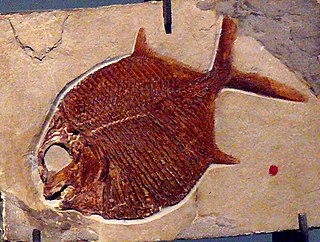 W
WGyrodus is an extinct genus of pycnodontiform ray-finned fish that lived from the late Triassic (Rhaetian) to the middle Cretaceous (Cenomanian).
 W
WLeedsichthys is a giant member of the Pachycormidae, an extinct group of Mesozoic ray-finned fish that lived in the oceans of the Middle Jurassic period. It is the largest ray-finned fish known to have existed.
 W
WNacientes del Biobío Formation is a geological formation that crops out near the uppermost reaches of Bío Bío River, in south-central Chile, and nearby areas of Argentina. The formation is made up of basalt and pyroclastic rocks and marine sedimentary rocks, such as sandstone and mudstone. Some less abundant sedimentary lithologies are conglomerate, volcaniclastic sedimentary rock. The formation is intruded by Grupo Plutónico Galletué which is of Late Jurassic to Late Cretaceous age. Further north in Chile the formation is similar to Nacientes del Teno Formation while in Argentina it is similar to Los Molles Formation and Lotena Formation.
 W
WLa Negra Formation is a geologic formation of Jurassic age, composed chiefly of volcanic and volcaniclastic rocks, located in the Coast Range of northern Chile. The formation originated in marine and continental (terrestrial) conditions, and bears evidence of submarine volcanism as well as large explosive eruptions. The volcanism of La Negra Formation is thought to have lasted for about five million years.
 W
WPerisphinctes is an extinct genus of ammonite cephalopod. They lived during the Middle to Late Jurassic epochs and serve as an index fossil for that time period. The species P. boweni was named after the English chemist and geologist E. J. Bowen (1898–1980).
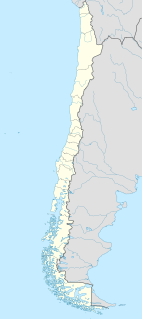 W
WThe Rocas Verdes ophiolites are a series of greenschists and other rocks constituting ophiolites in Magallanes Region, southernmost Chile. The Rocas Verdes ophiolites represent the continental-oceanic crust that existed in a back-arc basin in the Mesozoic Era as result of extensional tectonics. This back-arc basin then evolved into the Magallanes foreland basin in the Cenozoic Era within the context of the wider Andean orogeny.
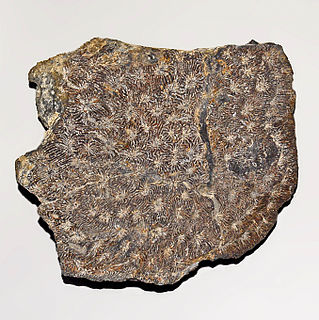 W
WThamnasteria is an genus of extinct stony corals.
 W
WTobífera Formation is a volcano-sedimentary formation of Middle to Late Jurassic age. The formation is crops out in the Magallanes Region in southern Patagonia and Tierra del Fuego of Chile, the Santa Cruz Province of southern Argentina, and in the subsurface of the Malvinas Basin offshore Argentina and the Falkland Islands.
 W
WThe Toqui Formation is a geological formation in the Aysén Region of southern Chile. It has been dated to the Tithonian stage of the Late Jurassic by uranium–lead dating of zircons, providing an age of 147 ± 0.1 Ma. It consists of an sequence of clastic sedimentary sandstones and conglomerates, interbedded with volcanic tuffs and ignimbrite. The dinosaurs Chilesaurus and indeterminate diplodocids are known from the formation. The formation was deposited in a fluvio-deltaic environment.
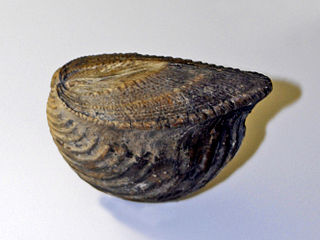 W
WTrigonia is an extinct genus of saltwater clams, fossil marine bivalve mollusk in the family Trigoniidae. The fossil range of the genus spans the Paleozoic, Mesozoic and Paleocene of the Cenozoic, from 298 to 56 Ma.
 W
WVarasichthys is an extinct genus of prehistoric bony fish that lived during the Oxfordian stage of the Late Jurassic epoch. Fossils have been found in the Domeyko Range of Antofagasta Region, northern Chile. The genus has been compared with other South American fishes as Luisiella and Protoclupea.
 W
WZamites is a genus of fossil tree known from the Mesozoic of North America, Europe and India through the Eocene of North America. It is a form taxon for leaves that resemble the extant cycad Zamia. The fronds are linear or lanceolate in shape, and pinnately compound, with pinnae with parallel veins and smooth margins, and symmetrical and constricted at the base where they are attached obliquely to the upper surface of the rachis. It has been interpreted as a cycad in the family Cycadaceae or a Bennettitalean plant.